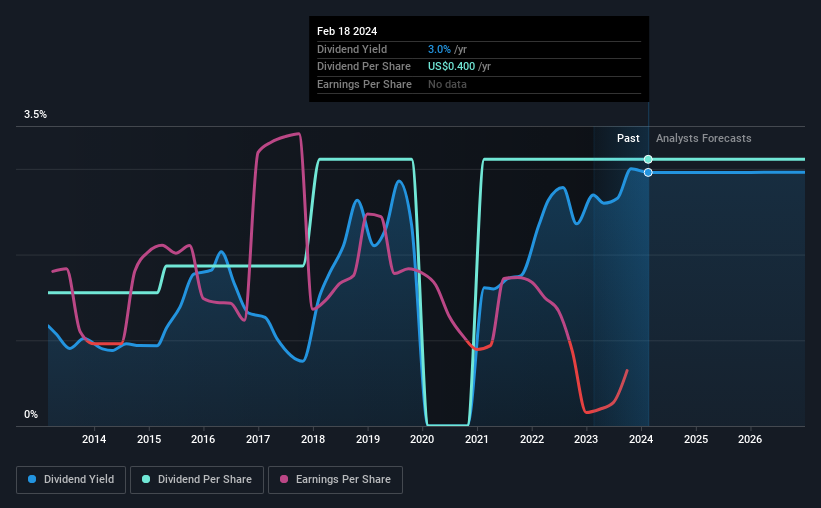The board of Dana Incorporated (NYSE:DAN) has announced that it will pay a dividend on the 22nd of March, with investors receiving $0.10 per share. This makes the dividend yield 3.0%, which will augment investor returns quite nicely.
See our latest analysis for Dana
Dana’s Payment Has Solid Earnings Coverage
While it is great to have a strong dividend yield, we should also consider whether the payment is sustainable. Dana isn’t generating any profits, and it is paying out a very high proportion of the cash it is earning. This makes us feel that the dividend will be hard to maintain.
Analysts expect a massive rise in earnings per share in the next year. If the dividend extends its recent trend, estimates say the dividend could reach 15%, which we would be comfortable to see continuing.
Dividend Volatility
The company’s dividend history has been marked by instability, with at least one cut in the last 10 years. Since 2014, the dividend has gone from $0.20 total annually to $0.40. This implies that the company grew its distributions at a yearly rate of about 7.2% over that duration. A reasonable rate of dividend growth is good to see, but we’re wary that the dividend history is not as solid as we’d like, having been cut at least once.
The Dividend Has Limited Growth Potential
With a relatively unstable dividend, it’s even more important to see if earnings per share is growing. Dana’s EPS has fallen by approximately 55% per year during the past five years. A sharp decline in earnings per share is not great from from a dividend perspective. Even conservative payout ratios can come under pressure if earnings fall far enough. Over the next year, however, earnings are actually predicted to rise, but we would still be cautious until a track record of earnings growth can be built.
Dana’s Dividend Doesn’t Look Great
Overall, while some might be pleased that the dividend wasn’t cut, we think this may help Dana make more consistent payments in the future. The company seems to be stretching itself a bit to make such big payments, but it doesn’t appear they can be consistent over time. Overall, this doesn’t get us very excited from an income standpoint.
Companies possessing a stable dividend policy will likely enjoy greater investor interest than those suffering from a more inconsistent approach. However, there are other things to consider for investors when analysing stock performance. For example, we’ve picked out 2 warning signs for Dana that investors should know about before committing capital to this stock. Looking for more high-yielding dividend ideas? Try our collection of strong dividend payers.
Have feedback on this article? Concerned about the content? Get in touch with us directly. Alternatively, email editorial-team (at) simplywallst.com.
This article by Simply Wall St is general in nature. We provide commentary based on historical data and analyst forecasts only using an unbiased methodology and our articles are not intended to be financial advice. It does not constitute a recommendation to buy or sell any stock, and does not take account of your objectives, or your financial situation. We aim to bring you long-term focused analysis driven by fundamental data. Note that our analysis may not factor in the latest price-sensitive company announcements or qualitative material. Simply Wall St has no position in any stocks mentioned.
